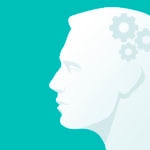Configuration - a concept we could apply to ourselves
We tend to configure our computers, our Smartphones, our social media and even our television. Digital adjustment allows us to adapt our devices and programs to our needs. But can we also configure ourselves?

Some of the words currently in vogue reveal that personal change is part of the psychological culture of the 21st Century: reinventing, re-engineering, recycling, or innovation are just a few. But there’s something more to the concept of configuration, because it combines the idea of change with that of stability. There are other details, but the configurations of our own life are one of the most powerful metaphors of our time.
These new concepts are among the great contributions of technological civilization to our lives. What Ortega and Dilthey defined, at the start of the 20th Century, as generations has given rise to a whole new nomenclature: millennials, Generation X or baby boomers. The most interesting thing is how humans are applying these concepts to our language. Some common phrases in use today could be: “after being in airplane mode, I´m going to reset myself in order to hear you better” or, “Rodrigo doesn´t have enough RAM to hear you…”. This capacity to make comparisons not only enriches our vocabulary but also allows us to pretend that we have systems similar to those of machines. Although technophobes may complain about them, these comparisons enrich our capacity to understand one another, and allow us to probe the limits of those relationships and also to feel connected to one another. Some relationships give us perspective because they provide clarifications, with the desire to differentiate ourselves, share our interests in a complex society and – as we said before – to configure our humanity.
The configuration metaphor comes from the language of information technology, specifically from systems programming. The concept has been used in physics, in order to apply molecular distribution to products in the pharmaceutical industry. In more practical areas, business administration theory has developed Configuration Management, which began in the U.S. Defense Department during the 1950s and gave rise to the much-admired 480 norms. Their fame responds to the fact that in a world of increasingly complex systems, the attempt to manage, standardize and adapt them generates a feeling of tranquility which is important for the future.
In information technology, the idea of configuration can be applied to hardware, software and documentation. Configuration relies on a series of procedures: the main one is connectivity; or the capacity to communicate. For example, firmware is a type of basic programming that manages the relationships between circuits and programming systems. In order to configure, it is necessary to able to connect the different elements. That implies systemization, policies and procedures. The pieces in a Lego set are symbols of the power of configuration: they are the modules par excellence in the world of games. In Sophie´s World, Jostein Gaarder relates it to a more ancient concept, that of Democritus of Abdera, who, in the 8th Century B.C, had already conceived of atoms. Configuration can be found anywhere; in the modular concepts of interior designers, in the automobile industry, in zapping, in electronic commerce or in fintech.
As for the original question – whether or not we can configure ourselves – it´s what we do day after day. Behind the original idea of configuration also lies the idea of projecting ourselves towards the unknown, of being flexible, or strong, or of starting over. In order not to be confused by the multitude of doors that open before us, it would be recommendable to read The Paradox of Choice: Why More is Less, by Barry Schwartz. Because the great challenge of personal configuration in the 21st Century is knowing how to choose from among so much abundance.
Angel Pérez Martínez is a professor at the University of the Pacific and is co-director of the magazine Revista de Estudios Orteguianos.